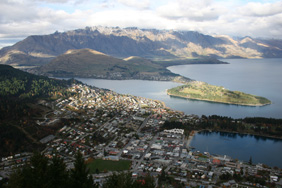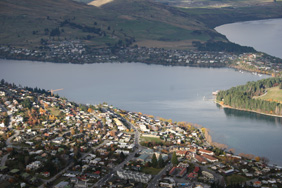Canon EOS 30D review
-
-
Written by Gordon Laing
Canon EOS 30D lenses
Canon EOS 30D features continued…
Lenses / Screen and menus / Sensor and processing
The Canon EOS 30D can take any EF or EF-S lens, and its APS-C sensor results in all focal lengths effectively being multiplied by 1.6 times. The 30D is commonly bundled with Canon’s EF-S 18-55mm f/3.5-5.6 lens which therefore delivers equivalent coverage to 29-88mm; this is shown below.
While the EF-S 18-55mm lens is a budget option, it performs surprisingly well, and is virtually given away in the bundle. We’d therefore recommend going for the bundle than the body alone, as it gives you a backup lens and better resale value as a kit for little extra expense. If you’re looking for a more up-market lens though, check out our Canon EF-S 17-85mm review which includes comparisons with the bundled EF-S 18-55mm and the premium EF 17-40 L. While this lens group test was conducted with the 350D / Rebel XT, this body has the same size sensor and virtually identical resolution to the 30D, so the results are applicable. If you’re interested in portraiture or low-light work, check out our Canon EF-S 17-55mm f/2.8 review.
Canon EOS 30D with EF-S 18-55mm f/3.5-5.6 (bundled lens) coverage | ||
 |  | |
| 18-55mm at 18mm, f8 (29mm equivalent) | 18-55mm at 55mm, f8 (88mm equivalent) | |
Canon EOS 30D viewfinder
The view through the Canon EOS 30D is essentially identical to the earlier 20D apart from a circle indicating the spot-metering area – a long overdue upgrade for this product range. The 30D viewfinder delivers 95% coverage, identical to the Nikon D200 and only 1% below the 5D.
Superimposed on the viewfinder screen are the nine focusing points arranged in a diamond pattern. The points are shown as small squares or rectangles with outlines which illuminate red when active.
Below the main view you’ll see the shutter speed, aperture, exposure compensation scale and the number of shots remaining in the buffer, along with a selection of icons to indicate various options. Like the 5D, if you want to see the current ISO or flash compensation value in the viewfinder or on the status screen, you’ll need to press their adjustment buttons.
In contrast, the Nikon D200’s detailed viewfinder additionally shows the ISO value along with both the metering and exposure modes at all times. These are more useful than you’d think if you’re the kind of photographer who frequently uses high ISOs or manual modes and forgets to reset them afterwards. We’ve been caught out by this with the 5D, accidentally shooting at, say, a high ISO and not realising until afterwards.
The focusing screen is bright and clear, but unlike the 5D there’s no options to switch it for one with different markings. This would be fine if Canon followed Nikon’s innovation by offering LCD-based viewfinder grid lines on demand, but sadly it hasn’t. So if you’re into precision alignments, you may have to consider a different body.




